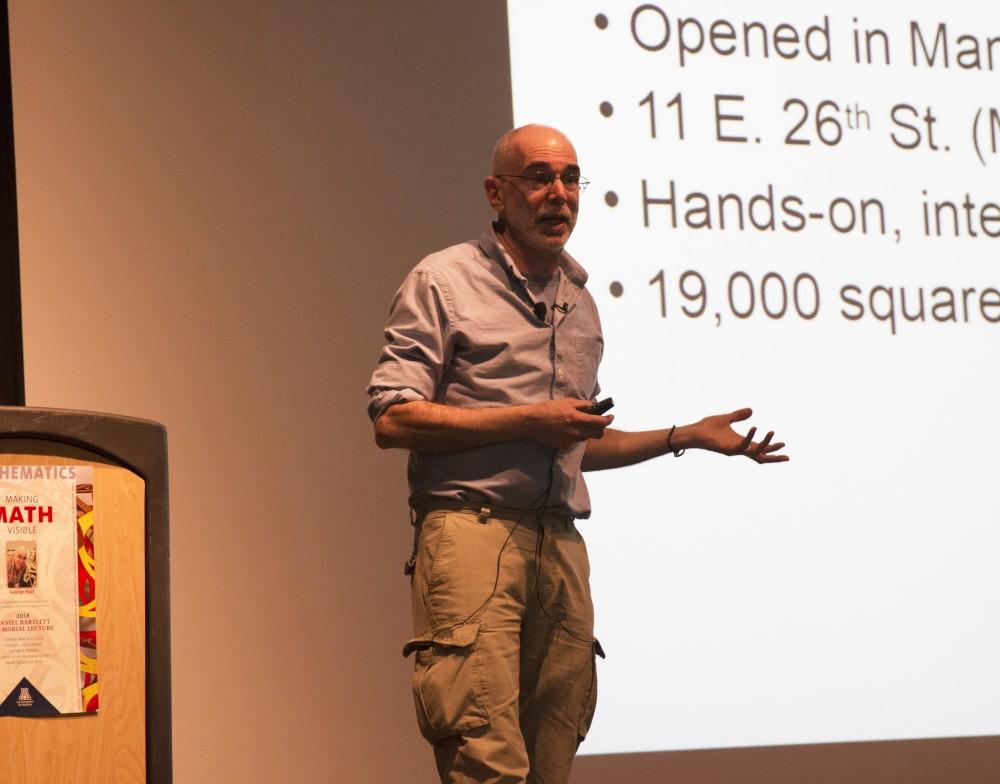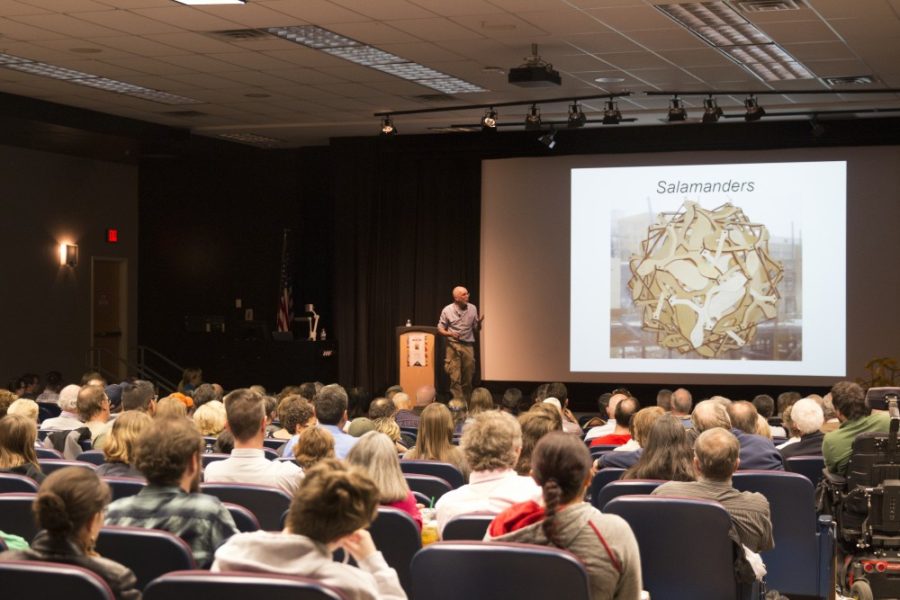George Hart, a professor at The State University of New York at Stony Brook, visited the University of Arizona to demonstrate the design of mathematically-based sculptures, to redefine how people see math.
Instead of looking at numbers on calculators, graphs and tests, Hart takes math and makes it visual.
During his visit, Hart created a mathematical sculpture using flat wood pieces, which were laser cut by the UA School of Art.
Hart started his “Making Math Visible” workshops in order to teach math inside and outside the classroom, using activities that excite students, according to his website.
RELATED: Highlighting the hidden talents of UA employees
His art consists of sculptures that are built based off geometric angles, shapes and sequences that create a tangible product that shows math at work. Most of his sculptures are made of laser-cut wood slices, brass, aluminum, acrylic plastic and stainless steel.
The sculptures use “patterns and relationships derived from classical ideals of balance and symmetry” to transform two- dimensional shapes into three-dimensional geometric sculptures, according to Hart.

“Art and math are both exciting, creative fields and are a natural combination together,” he said.
Hart’s “Making Math Visible” lectures were designed to inspire students to discover a variety of different topics in mathematics and give them an opportunity to form a positive outlook on math.
RELATED: Murals of the Tucson community
The lecture, held March 27, was moderated by Bruce Bayly, an associate professor of mathematics at the UA, who is also familiar with the representation of math in the art world.
“When I was a teenager I used to make math-style art using sticks and colored string,” Bayly said. “Then a few years ago as a professor I gave a lecture in the UA Museum of Art about math in fractals and the paintings of Jackson Pollock.”
Math is used in many art forms to create shapes and patterns, and can be seen in both 3D, like Hart’s sculptures, or in 2D art when creating perspective images, such as landscapes.
“Art with mathematical foundations can be in any style. What makes it mathematical is the content, not the style,” Hart said.
To help educate people of all ages about mathematics in the real world and spread his love for math, Hart co-founded the first and only National Museum of Mathematics in New York City.
According to the museum’s website, the museum “highlights the role of mathematics in illuminating the patterns and structures all around us”.
Hart’s sculpture at the UA, called “Arizona,” can be found on the third floor of the Environment and Natural Resources 2 building.
“[It] embodies many types of geometric patterns that the viewer might slowly discover while studying it,” Hart said. “One might look for three-fold, five-fold and two-fold rotational axes; pairs of co-planar pieces, parallel planes, perpendicular planes; the six planes of a cube, five cubes and much more. I tried to embody an abstract impression of the Arizona mountains and deserts without being overly representational.”
Following the sculpture-building demonstration, Hart gave a lecture on why visualizing math is beneficial to students.
Bill and Carla Kirchner, family friends of Bayly, attended the lecture to support him and to learn about math and visual representation.
“I thought the lecture was fabulous. The images were beautiful and very interesting,” Carla said.
Her husband, Bill, said art and math together should be studied in classrooms because “it connects the serious mathematics with a sort of playful spirit and a spirit of beauty.”
Dan Rossi, a graduate student pursuing a Ph.D. in mathematics, also said he believes students should study math and art.
“There’s sort of this style that mathematicians think is very beautiful that for a lot of people, I think, never get far enough in their math career to see that side,” Rossi said. “Being able to introduce math to somebody very early on, I think, is a great way to expose people to something they might not otherwise get the opportunity to see.”
Follow Daily Wildcat on Twitter









